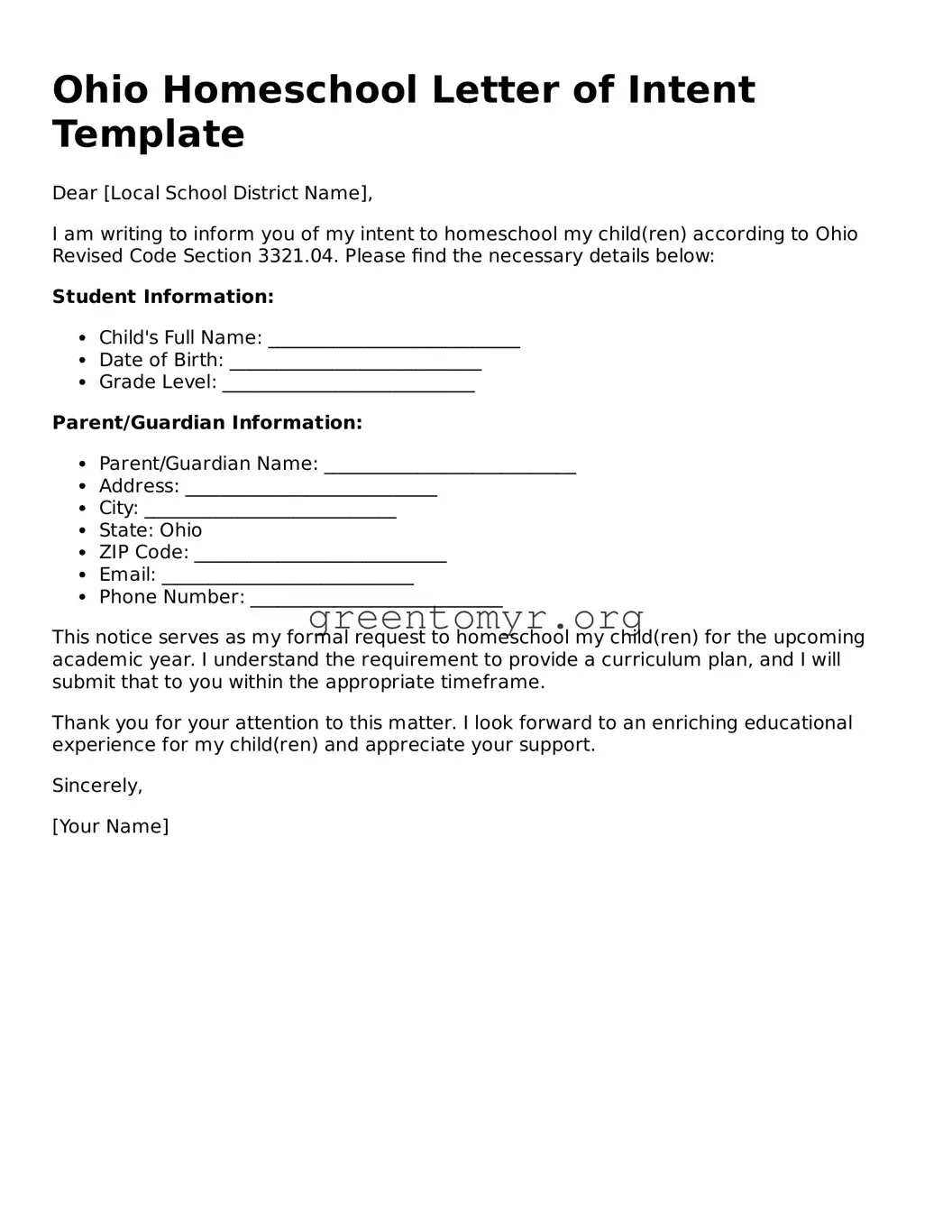Filling out the Ohio Homeschool Letter of Intent form is an important step for parents who wish to educate their children at home. However, many people make common errors that can lead to delays or complications in the homeschooling process. Understanding these mistakes can help ensure a smoother transition to homeschooling.
One prevalent mistake is incomplete information. The form requires specific details, including the child's name and age. Omitting any of this information can create confusion and additional paperwork later on. Parents should take the time to carefully check all sections of the form before submission.
Another common error involves improper signature. The form must be signed by the parent or guardian. Failing to sign it or providing an illegible signature may lead to rejection. It is crucial to ensure that the form is duly signed in clear handwriting.
Additionally, some parents underestimate the importance of timing. Ohio law requires that the letter of intent be filed in a timely manner, specifically prior to the start of the school year. If submissions are delayed, families may face difficulties in home educating their children without legal repercussions.
More often than not, individuals neglect to provide the necessary documentation. While the letter of intent itself is a straightforward form, some parents may mistakenly believe that additional materials are not needed. In certain situations, compliance with state regulations may require supplementary documents. Ignoring this could hinder the homeschooling process.
Misunderstanding the local regulations also leads to issues. Each district may have slight variations in requirements or expectations concerning homeschooling, which must be taken into account. It is crucial for parents to familiarize themselves with local policies before submitting their forms.
Failure to keep a copy of the submitted form is another mistake. Once the form is submitted, parents should retain a copy for their records. This can prove essential if questions arise or if there is a need to confirm submission. Documentation is key in managing a successful homeschooling experience.
Lastly, overlooking the contact information can be problematic. The form requires that parents provide current contact details. In the event of inquiries or additional requirements, being inaccessible can create unnecessary hurdles. Always ensure that contact information is accurate and up to date.
By addressing these mistakes, families can complete the Ohio Homeschool Letter of Intent form correctly and pave the way for a successful homeschooling journey.
